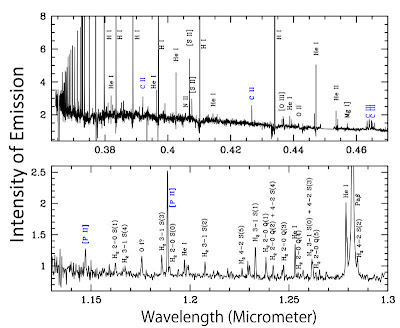Figure 1: The structure of fullerene C60
Credit: NAOJ
Credit: NAOJ
How much C60 exists in space? Since C60 is very stable, could there be much more C60
in celestial objects than on Earth? To answer these queries, the team
focused on a class of dying stars called "planetary nebulae" (Note 2), because cosmic C60
has previously been detected in these objects. Otsuka analyzed all of
the relevant spectroscopic data taken by the SST and analyzed spectral
data from more than 300 planetary nebulae, checking each carefully for
evidence of C60 infrared wavelengths. The team identified C60 in several planetary nebulae, including the first detection of C60 in M1-11 (Figure 2). Otsuka also found evidence for C60 in the archived spectra of M1-11 taken by the VLT and proceeded to estimate the total amount and the temperature of C60
in M1-11. Using data obtained with the SST and AKARI, he also
investigated the dust grain composition in M1-11 and obtained the amount
in each component. Although M1-11 is rich in carbon-bearing molecules
and minerals, C60 makes up only 0.01 percent of the total dust mass. Therefore, he concluded that C60 is very rare in the interstellar medium.
Figure 2: Detection of C60 in M1-11. Arrows indicate the postions of the C60 emissions at 17.3 and 18.9 microns. (Credit: NAOJ)
How, then, did C60 form in space? Characterizing the physical conditions in the environments that contain C60
is an important step in understanding this process. Otsuka applied the
method of elemental abundance analysis to unveil the evolutionary status
of M1-11's nebula and its progenitor star, which were largely unknown
until his research. The team used the 8.2 m Subaru Telescope's High
Dispersion Spectrograph (HDS) and the Okayama 1.88 m telescope's near
infrared imager and spectrograph (ISLE) to precisely measure line
strengths of chemical elements such as carbon (C), phosphorous (P), and
krypton (Kr). Detailed analysis of the spectra (Figure 3)
revealed the relative amounts (abundances) of eleven elements. The team
found that M1-11 is a very young planetary nebula, which formed from
material ejected by the star ~1000 years ago; and it evolved from a star
50% more massive than the Sun. The obtained values in M1-11, namely,
the C60 mass and temperature, the elemental composition of
the gas in the nebula, the mass of the progenitor star, and the
evolutionary status, are very similar to those seen in other planetary
nebulae containing C60, e.g., Tc1, where the cosmic C60 was detected for the first time by the SST (Note 3). The team concluded that C60
is likely to form in carbon-rich dusty objects such as M1-11. They
believe that chemical processing and the destruction of HAC
(hydrogenated amorphous carbon) by the radiation as well as the strong
wind from the central star of a planetary nebula produce the cosmic C60.
Figure 3:
Detailed analysis of the spectra of M1-11 taken by the Subaru
Telescope's High Dispersion Spectrograph (HDS) (upper panel) and the
1.88 m Okayama telescope's near-infrared imager and spectrograph (ISLE)
(lower panel). The emission lines from the carbon (C) and the
phosphorous (P) are indicated by the blue characters; those from
hydrogen (Paβ), helium (He), and oxygen (O), are indicated by black
characters. In the ISLE spectrum, molecular hydrogen (H2) is also noted. (Credit: NAOJ)
Using the Subaru Telescope's Cooled Mid-Infrared
Camera and Spectrometer (COMICS), Otsuka has recently started a new
project to investigate the spatial distribution of C60 in planetary nebulae to verify the C60 formation scenario. As Otsuka stated, "These new Subaru observations will further clarify the C60 formation process".
References:
The research paper on which this release is based was published in The Astrophysical Journal (Otsuka et al." The Detection of C60 in the Well-Characterized Planetary Nebula M1-11" The Astrophysical Journal, 764:77 (20pp), 2013 February 10).
The authors are:
The research paper on which this release is based was published in The Astrophysical Journal (Otsuka et al." The Detection of C60 in the Well-Characterized Planetary Nebula M1-11" The Astrophysical Journal, 764:77 (20pp), 2013 February 10).
The authors are:
- Masaaki Otsuka (Academia Sinica Institute of Astronomy and Astrophysics [ASIAA]/Space Telescope Science Institute [STScI]), Taiwan/USA
- Franciska Kemper (ASIAA), Taiwan
- Siek Hyung (Chungbuk National University), Korea
- Benjamin A. Sargent (Rochester Institute of Technology [RIT]/STScI), USA
- Margaret Meixner (STScI), USA
- Akito Tajitsu (Subaru Telescope), USA
- Ken'shi Yanagisawa (Okayama Astrophysical Observatory [OAO]), Japan
Acknowledgements:
This research was supported by the following:
This research was supported by the following:
- Space Telescope Science Institute (STScI) GO-1129.01-A, DDRFD0101.90128, USA
- National Aeronautics and Space Administration (NASA) NAO-50-12595, USA
- National Science Council NSC100-2112-M-001-023-MY3, Taiwan
- National Research Foundation of Korea NRF-2011-005077, Korea
Notes:
- A fullerene is any carbon molecule with the chemical formula C60. It is patterned in a very specific way, like the pentagons and hexagons that make up the shape of a soccer ball. Named in homage to the designer, author, and inventor Buckminster Fuller, fullerenes resemble the geodesic domes that Fuller invented. C60 is nicknamed a "buckyball", once again in honor of Buckminster Fuller.
- Planetary nebulae are dying Sun-like stars that were initially one to eight times the mass of the Sun. They are clouds of glowing gas and dust surrounding a hot star (over 30,000 K).
- See http://www.sciencemag.org/content/329/5996/1180.abstract


